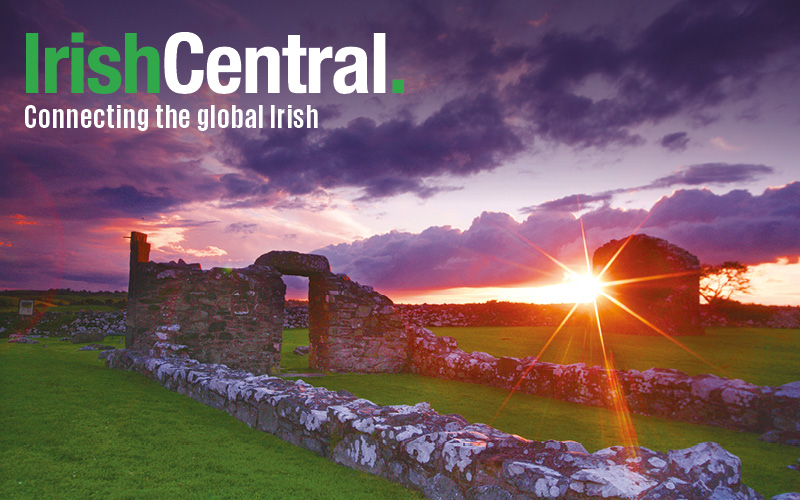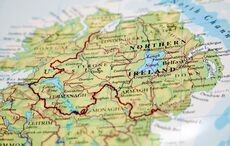Catherine Corless, who uncovered the mass grave in Galway, says Irish authorities are more concerned with saving money than justice, calls for pressure to perform full forensic excavation.
The brave historian whose tireless research unveiled the scandal of the 796 ‘Tuam Babies’ has expressed concern that the Irish authorities are more concerned with saving money than finding justice for the children.
Catherine Corless has called on IrishCentral readers to back her calls for a full forensic excavation, exhumation, and DNA testing to be carried out on the babies who are buried at the site of a disused septic tank at the former Tuam Mother and Baby Home in County Galway.
Memorial plaque in lieu of examination
She is concerned that Galway County Council, the authority with responsibility for the site, will put a memorial in place where the bodies were found in mass graves rather than go through the far more costly process of a thorough examination.
The Council is currently accepting submissions from members of the public regarding what to do with the site and Corless has expressed anger at the prospect of a cover-up regarding what really happened to the babies at the home.

Site were 796 children's bodies were buried in a mass grave by the Cathoilc Church.
“If cost is a factor, then why not get the Bon Secours order rather than the taxpayer to fund a full forensic excavation and recovery of the human remains at the site?” she asked IrishCentral this week.
Silence from the Church
“The survivors have heard nothing from the Bon Secours since my research was first published in 2014 and justice for these babies should be the first and only priority for the babies at this time. Nobody has ever answered our questions about what happened at this place and why it happened.
“This is an opportunity for the Irish authorities to show that the right thing can be done, to ensure justice for these babies and for the survivors of these Mother and Baby homes. If the Council doesn’t do the right thing, they are going to add to the pain of the survivors. “
Read more: Irish woman "spawned the seed of satan" and lost three babies to nuns
Plans for protest
Corless has warned the local authority than they can expect embarrassing street protests, led by the survivors and the families of children buried at the home, if they decline to carry out a full forensic excavation at the site.

Sign tied to the Irish government building's railings during a previous protest over the Tuam Babies' site.
Her research generated headlines across the world in March 2017 when the Irish Government confirmed that there were mass graves containing the bodies of children who died at the home between 1925 and 1961. Some of the bodies were buried in a disused septic tank.
Search for family in 796 dead
The home, which was run by the Bon Secours order of nuns, was one of many across Ireland which accommodated unmarried mothers and their children.
Survivors are still trying to trace family members who may be among the 796 infants, uncovered by Corless’ research, who died at the home but were never buried in consecrated ground. Many also believe that some of their relatives may have been adopted by couples in the United States or Great Britain.

Children being cared for by nuns at one of Ireland's mother and baby homes.
“There was a public outcry this time last year that the Tuam Home babies were buried in this way, but the Government’s shock is somewhat dwindling at this stage, with the focus now on cost,” she told Irish Central.
“The Tuam babies deserve a decent burial in consecrated ground, alongside their relatives. Memorializing them with a statue planked on top of the septic tank is only a further slight adding to the way their little bodies were discarded there in the first place.”
Read more: Death records for 796 children at Tuam home published in full
Call for Irish public and the Diaspora's help
Corless was inundated with correspondence from Irish people in North America after her research was vindicated by the Irish Government last year and now she wants the Irish emigrant community to act by making their feelings known to Galway County Council.
A report which was completed last December outlined five options for the site, including a memorial, exhumation of known remains, forensic excavation and recovery of either known human remains or the entire available area, including the disused septic tank.
Galway County Council is facilitating a full public consultation process regarding the five options outlined by an Expert Technical Group.
Catherine and the survivors believe a memorial without a full forensic excavation would be an insult to the children who died in Tuam, no matter what the cost, and they want members of the public to contact the local authority to make their views known by the deadline of next Friday, March 16.
Corless has expressed her concerns about the need to find justice for the children to the Minister for Children and Youth Affairs, Dr Katherine Zappone, after being heartened by her decision to organise a full ground survey of the site last year.
Members of the public can email [email protected] or telephone +353 (0)91 509561 if they have any queries regarding the full public consultation process.
The Justice for Magdalenes Research (JFMR) and Adoption Rights Alliance (ARA) groups have echoed Ms Corless’ calls for a full forensic examination and recovery of human remains to be carried out at the total available area in Tuam.
No truth without forensics
For much of the 20th century, mothers who had children outside of marriage in Ireland were locked up in Magdalene Laundries run by nuns and forced to work as virtual slaves.
“There can be no ‘truth-telling’ about Tuam in the absence a forensic excavation. And, there can be no guarantee of non-recurrence in the absence of the truth: the complete truth as to how many babies are buried at the site,” said JFMR and ARA in a joint statement this week.
“The forensic excavation should also be conducted in conjunction with a complete investigation into burial and adoption practices at Tuam, particularly if fewer than 796 human remains are located. This can be done in a dignified and respectful manner. Cost should not be a consideration.”

Children who lived at the Tuam mother and baby home (Via: Connacht Tribune).
They said that the abuse of Ireland’s unmarried mothers and their children was not just confined to Tuam and it was imperative that Minister Zappone should give the same level of consideration and consultation to other institutions across the country.
“Under no circumstances should any memorial erected at Tuam or any other institution be considered an end to the matter,” added the statement.
“The most fitting memorial of all would be to grant adopted and boarded out people automatic access to their full, unredacted adoption records, and the opening of all administrative files relating to the institutions, agencies and individuals which dealt with Ireland’s unmarried mothers and their children.”
Read more: Tuam dead babies scandal is only the tip of the iceberg
* Ciaran Tierney is a journalist, blogger, and digital storyteller, based in Galway, Ireland. Find him at CiaranTierney.com.
This article was submitted to the IrishCentral contributors network by a member of the global Irish community. To become an IrishCentral contributor click here.




Comments